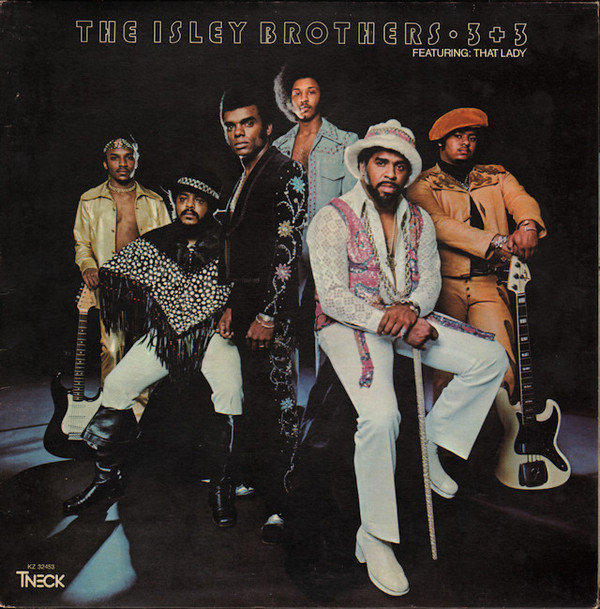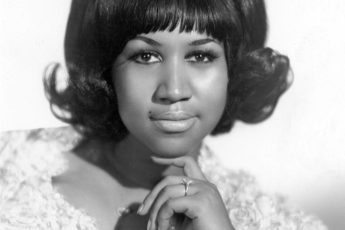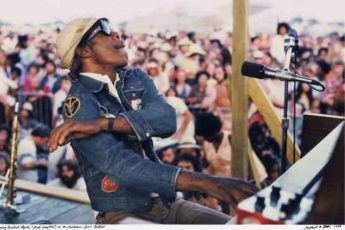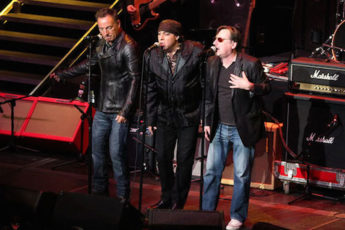Most of rock and roll history is made up of guitar-centric bands, and there’s no shortage of acts you might associate with killer, long-winding guitar solos. But it’s highly doubtful the Isley Brothers would ever appear within either of those groupings. Yet on arguably their biggest song ever, this R&B stalwart and Rock and Roll Hall of Fame inductee featured withering, stretched-out, even psychedelic guitar jamming worthy of Jimi Hendrix. Which is only somewhat less surprising when considering that one of the earliest gigs for the pre-rock God revolutionary Hendrix was playing in the Isleys back-up band.
The Isley Brothers started out long ago as a vocal trio consisting of brothers O’Kelly, Rudolph and Ronald Isley and first came to prominence in 1959 with a hit single written by the three of them named ‘Shout’ (to be famously reborn years later by Otis Day & The Knights in “Animal House” and heard mandatorily at all frat parties thereafter forever more). They followed that up in the ‘60’s with classic tunes such as the Motown-produced ‘This Old Heart of Mine’ and Grammy winning funk of ‘It’s Your Thing’ as well as one The Fab Four would subsequently make notorious, ‘Twist and Shout.’ Then after having enjoyed substantial success with music influenced by soul, gospel, and even doo-wop, the Isleys began experimenting with styles incorporating rock, funk, and pop balladry by formally welcoming into the full band younger brothers Ernie on lead guitar and Marvin on bass, plus Rudolph’s brother-in-law Chris Jasper on keyboards. The resulting landmark 1973 record melding the original Isleys with their new additions – ergo it’s title “3+3” – marked the beginning of their most successful decade with a prolific run of 12 standout albums that included “Harvest For The World,” “Showdown,” “Between The Sheets,” and the #1 smash “The Heat Is On.” Per AllMusic, “The Isley Brothers enjoyed one of the longest, most influential, and most diverse careers in the pantheon of popular music,” with songs in the Billboard 100 in five different decades, 16 of their albums in the Top 40, and 13 of those albums certified gold, platinum or multi-platinum. It seems only slightly less critical to add that in their reformulation they’d also established themselves in a well-earned tie with the Jacksons and Osmonds for most brothers ever to make up a band.
The lead track on “3+3” was a song The Isleys had originally done in Impressions-inspired R&B vocal style as ‘Who’s That Lady’ but re-worked now as the searing funk-rock masterblaster with which a grateful music world became familiar, officially titled ‘That Lady, Pts. 1 & 2.’ And notwithstanding Ronald’s passionate, effervescent vocals (and noteworthy bird call in the opening), Marvin’s deeply pocketed bass line groove, not to mention the secret weapon of Kwasi “Rocky” Dzidzornu¹ peppering the congas, this was truly Ernie’s mesmerizing show on the electric guitar. During the period in 1964-1965 that Hendrix had supported the Isleys in the studio and on tour, Ernie had been strongly influenced by Jimi’s idiosyncratic methods, and his devastating playing on this six-string manifesto is almost difficult to describe. Or understand. I’ve seen it chronicled as “heavy Hendrix-style sustain carrying a soft fuzz distortion.” Well, okay. Others have noted “a phaser and wah-wah pedal”; “a fuzz with a Mutron bi-phase”; and a “vox tonebender.” Clearly, I have little idea what’s accurate, or frankly what all that even means. What I do know is that Ernie takes this already smoking ‘70’s funk-fusion paragon and positively incinerates it. His piercing guitar sound first peeks in beginning at the 10-second mark and accents tastefully through two verses, grabs a brief run at 1:34, then takes the main stage for good at 2:12, past the organ/conga breakdown at 4:34, and continuing the scorching Hendrix-like squealing into the final stop-time ending another full minute later – to the point that one reviewer actually wondered “How the hell did that guitar survive that…it should have burned up.”
Exactly thirty years later in 2003, Rolling Stone ranked ‘That Lady’ #357 on its list of the 500 Greatest Songs of All Time. No disrespect to numbers 1 through 356, but Ernie Isley and his still-smoldering guitar would like to have a word with you.
¹alternately known as Rocky Dijon, the Ghanaian percussionist also recorded contributions for the Rolling Stones, Stevie Wonder, Joe Walsh, Billy Preston, and Taj Mahal, among others.
Kendrick Lamar’s ‘i’, a 2015 multi-Grammy winner and one of the biggest songs of the modern music era. Recognize anything?







Leave a Comment